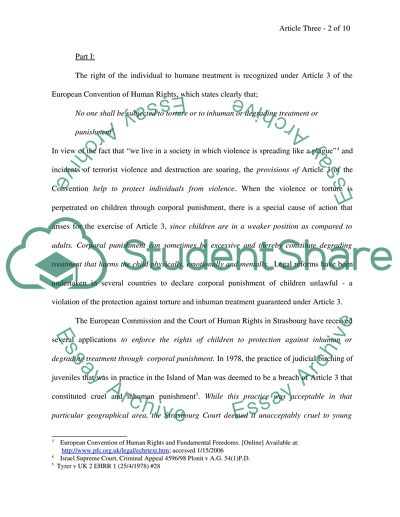Cite this document
(Human Right to Humane Treatment Term Paper Example | Topics and Well Written Essays - 2000 words, n.d.)
Human Right to Humane Treatment Term Paper Example | Topics and Well Written Essays - 2000 words. https://studentshare.org/law/1535812-human-rights-and-civil-liberties-choose-one-of-the-rights-listed-below-explain-how-the-european-convention-on-human-rights-seeks-to-uphold-that-right-highli
Human Right to Humane Treatment Term Paper Example | Topics and Well Written Essays - 2000 words. https://studentshare.org/law/1535812-human-rights-and-civil-liberties-choose-one-of-the-rights-listed-below-explain-how-the-european-convention-on-human-rights-seeks-to-uphold-that-right-highli
(Human Right to Humane Treatment Term Paper Example | Topics and Well Written Essays - 2000 Words)
Human Right to Humane Treatment Term Paper Example | Topics and Well Written Essays - 2000 Words. https://studentshare.org/law/1535812-human-rights-and-civil-liberties-choose-one-of-the-rights-listed-below-explain-how-the-european-convention-on-human-rights-seeks-to-uphold-that-right-highli.
Human Right to Humane Treatment Term Paper Example | Topics and Well Written Essays - 2000 Words. https://studentshare.org/law/1535812-human-rights-and-civil-liberties-choose-one-of-the-rights-listed-below-explain-how-the-european-convention-on-human-rights-seeks-to-uphold-that-right-highli.
“Human Right to Humane Treatment Term Paper Example | Topics and Well Written Essays - 2000 Words”. https://studentshare.org/law/1535812-human-rights-and-civil-liberties-choose-one-of-the-rights-listed-below-explain-how-the-european-convention-on-human-rights-seeks-to-uphold-that-right-highli.


